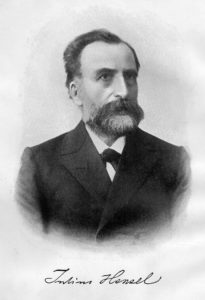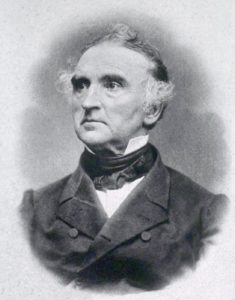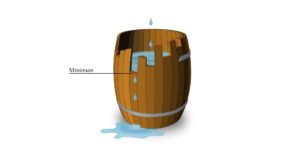Bread from Stones by Julius Hensel– Book Review
Bread from Stones
“Our most optimistic expectations are no less than the realization of an old dream: ‘What will fertilizing with stone dust accomplish? It will turn stones into bread, make barren regions fruitful, and feed the hungry.’”
–Ward Chesworth and coauthors, quoting Julius Hensel [1]
Producing healthy, nutritious foods starts with creating fertile soils to support proper food growth. Dr. Alexis Carrel, a Nobel Prize winner, commented in 1912 that “minerals in the soil […] control the metabolism of cells in plant, animal, and man […] if soil is deficient in trace elements, food and water will be equally deficient.” [2] This suggests that fertile soil conditions can be achieved via soil remineralization, the practice of adding essential minerals and trace elements back into the soil through the application of rock dust and sea minerals, thereby equipping the soil with the full range of nutrients to yield wholesome crops.
The current soil remineralization movement traces its roots back to the German biochemist, food nutritionist and agricultural chemist Julius Hensel. In 1894 he published a book titled Bread From Stones: A New and Rational System of Land Fertilization and Physical Regeneration that touted the use of ‘stone meal technology,’ the term used at the time to refer to soil remineralization. [3] In his book, he extensively documented the dysfunctional state of industrial agricultural practices and proposed that growers should use more natural, wholesome fertilizers such as granite. However, his views were met with widespread skepticism and even considered outrageous by some. To understand better where Hensel was coming from, it is important to understand the state of agriculture in the 1880s.
Justus von Liebig’s Theory
Imagine a barrel filled with water. The staves composing the barrel are of different lengths, and water is leaking out over the shortest stave. In order to resolve this issue, the shortest stave must be lengthened.
This is the classical image used to represent Justus von Liebig’s Law of the Minimum, which states that crop yield is constrained by the nutrient whose supply is most limited. Each stave in the image represents an element or nutrient and the shortest stave – the nutrient that is most lacking – is the cause for decreased yield. In order to compensate for the limited nutrient, application of external fertilizer is required. At that time it was believed that nitrogen, phosphorus, and potassium (N-P-K) were the essential limiting nutrients.
Enter Hensel. In Bread From Stones, Hensel gave a discourse on the elemental constituents of plants, showing that minerals aside from the standard N-P-K are also required for plant growth. This view was eventually accepted by Liebig, who rescinded his earlier belief and acknowledged the value of mineral nutrients in the soils. [4] But by then it was too late; Liebig’s theory had become entrenched. Hensel’s ideas did not go over well with the profit-driven agrochemical industry and were even criticized by esteemed agriculture specialists. The former even set out an extensive campaign to impugn Hensel’s works. [3] It was not until years after Hensel’s death that his discoveries became recognized for their important implications and were integrated into the organic movement in the first half of the twentieth century. [2]
Summary of Bread from Stones
What can fertilizing with rock dust accomplish? Hensel addressed this question from agricultural, social, and economic standpoints. He stated that stone meal not only produces wholesome crops, but creates higher values through better-quality crops, abundant and consistent yield, removal of pests and diseases, rejuvenation of degraded or exhausted lands, and provision of food for the hungry.
Hensel also examined the popular practices of using artificial fertilizers and stable manure in contemporary agriculture, citing each as being inadequate for restoring depleted soils. In response to the overwhelming belief that potassium and phosphoric acid are the two main limiting nutrients, Hensel pointed out that prior testing methods used to support this belief were flawed. Previously, only seeds from plant ashes were measured for nutrient content, which led Liebig to infer that potassium and phosphoric acid were the most important nutrients for plants. However, seeds have a disproportionately large amount of potassium and phosphoric acid compared to other plant parts. If testing methods were to take into account ashes from all parts of the plant, phosphoric acid only accounts for one-tenth of a plant, while the other 90% is a mixture of potassium, soda, lime, magnesium, silica, sulphuric acid, chlorine and fluorine. Hensel concluded that the simple application of N-P-K was therefore not sufficient. However, since the majority of the elements are present in granite, an application of stone dust would be more beneficial.
Hensel also dedicated a section to ‘stable manure,’ another common fertilizer choice. Besides the adverse environmental effects of keeping large areas of pasture to support cattle and other livestock for manure production, manure is also lacking in nutrient variety. Consequently, lands that rely on long-term manure fertilization may become nutrient-deficient over time, making other forms of fertilizer necessary. On the other hand, rock dust contains a diversity of nutrients that simulate natural plant-growing conditions. This view was corroborated by another man – Sampson Morgan, a pioneer of the organic movement in England – who spoke against using animal manure as fertilizer. Instead, he advocated for the use of “green manure” such as seaweeds and kelps along with rock dust as plant food.
Following his arguments against artificial fertilizer and stable manure, Hensel addressed a primary critique that had been directed against his work: mineral fertilizers take too long to disintegrate and release essential nutrients back to the soil. The solution to this problem is manually grinding up the granite to create particles small enough for quick disintegration under natural conditions. However, there were no quick and easy methods during Hensel’s era to break down granite, rendering mass production of mineral fertilizers difficult. Despite this critique, Hensel continued to remind readers that the benefits of stone meal technology far outweighed its problems.
At the end of the book, Hensel illustrated the feasibility of stone meal technology by including past correspondence from growers and individuals who experimented with mineral fertilization. The selection included individuals from a profusion of backgrounds, from the Director of the Agricultural and Forestry School to horticulturists, teachers and physicians. By far a majority of the feedback came from growers and farmers, who tested Hensel’s methods on a variety of crops and found overwhelmingly positive results. One claimed that he had used rock dust for five consecutive years and found that the “soil becomes better every year by using this [rock dust] manure.” (Ironically, Hensel was opposed to stone meal being referred to as “mineral manure.”) Another grower cited that “[rock dust] possesses the quality of vigorously nourishing the plants and making them strong to resist frosts and drought.” This statement was corroborated in 1893, when a group of farmers and their friends toured the fields grown using rock dust application and found that their crops thrived even under drought stress, whereas neighboring fields without rock dust application suffered damage.
Hensel closed the book with a reiteration of the importance of using remineralization. His arguments are based on chemistry and the way different elements and compounds interact with one another. Finally he settles the question about whether remineralization will pay off, contending that rock dust will pay off in the long run because its effects are longer-lasting than other forms of fertilizers.
Conclusion
Hensel’s Bread From Stones set the stage for later developments in the field of more sustainable agriculture. This was followed up by research in Germany in the 1960s as well as the development of a scientific field referred to as agrogeology that came out of Canada and particularly focused on the semi-tropical and tropical regions. At the same time a grassroots movement based on a book called The Survival of Civilization by John Hamaker and Don Weaver took off in the 1970s – 80s of which Remineralize the Earth is a part. [5] This movement has additionally served as foundation for Remineralize the Earth’s projects, and as such we wanted to honor the early pioneer Julius Hensel by introducing his book to a wider audience. A free PDF copy of the book can be obtained via the Soil and Health Library for those interested in pursuing the topic further.
Linked Resources
PDF copy of Julius Hensel’s Bread from Stones
RTE Article “Agrogeology: Geology in the Service of Agriculture”
References
[1] Chesworth W., Macias-Vasquez F., Acquaye D., and Thompson E. (1983) “Agricultural Alchemy: Stones into Bread.” Episodes 1, 3-7. [2] Hensel, J. (1894) Bread from Stones: A New and Rational System of Land Fertilization and Physical Regeneration. Reprint: Soil and Health Library (2009). [3] Tompkins P. and Bird C. (1989) The Secrets of the Soil: New Solutions for Restoring Our Planet. HarperCollins (New York). [4] Barak P. (2000) “Essential Elements for Plant Growth Law of the Minimum.” http://soils.wisc.edu/facstaff/barak/soilscience326/lawofmin.htm [5] Hamaker J. and Weaver D. (1982) The Survival of Civilization. Hamaker-Weaver Publishers (Woodside, CA).
Support us on Patreon
Thank you for joining us today! Please become a member of RTE and support us on Patreon. Unlike many larger organizations, we work with a team of determined and passionate volunteers to get our message out. We aim to continue to increase the awareness of remineralization to initiate projects across the globe that remineralize soils, grow nutrient dense food, regenerate our forests’ and stabilize the climate – with your help! If you can, please support us on a monthly basis from just $2, rest assured that you are making a big impact every single month in support of our mission. Thank you!











Got something to say?